Picture this: A two-lane road with no traffic that runs for miles along an undeveloped sandy coastline, where you can stop and wade into the water and watch wading birds and even dolphins.
Even in Florida, such a place still exists, and it’s called the Big Bend Scenic Byway.
One of six federally designated scenic byways in Florida, this one stretches along Florida’s Gulf Coast below Tallahassee. It’s the eastern-most portion of the Panhandle, where there are few towns and lots of natural beauty and interesting history.

The Big Bend Scenic Byway links a vast national wildlife refuge, three state parks, three historic lighthouses, one of the best beach islands in Florida and picturesque fishing towns.
When the Big Bend Scenic Byway was created in the ‘90s, an extensive guide was published. I couldn’t find printed copies anywhere, but you can see it online. (It’s a 76-page PDF.)
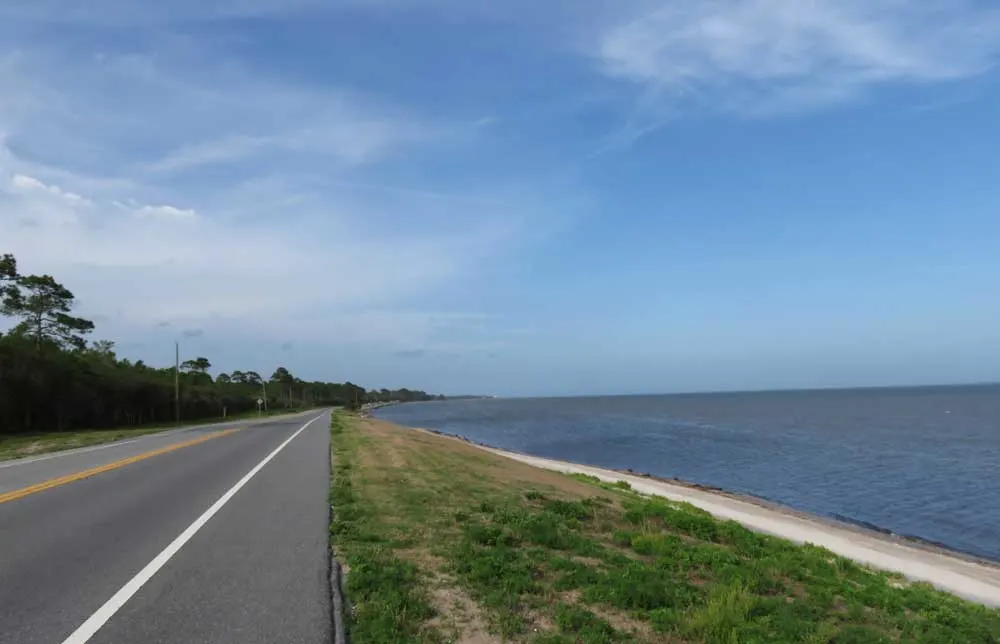
We didn’t follow the exact route for the Big Bend Scenic Byway, but it was a great starting point for trip planning. We largely followed US 98 with side trips north and south. The official byway route sets out a separate Forest Trail. We selected stops from that route as side trips off US 98.
The section of the Big Bend Scenic Byway that is “don’t miss” scenic is US 98 between Bald Point State Park and Apalachicola and then out to St. George Island. This is the section that hugs the coastline for 40 beautiful miles. Other portions of the route pass through little-developed forests, which are lovely but not as dramatically scenic.
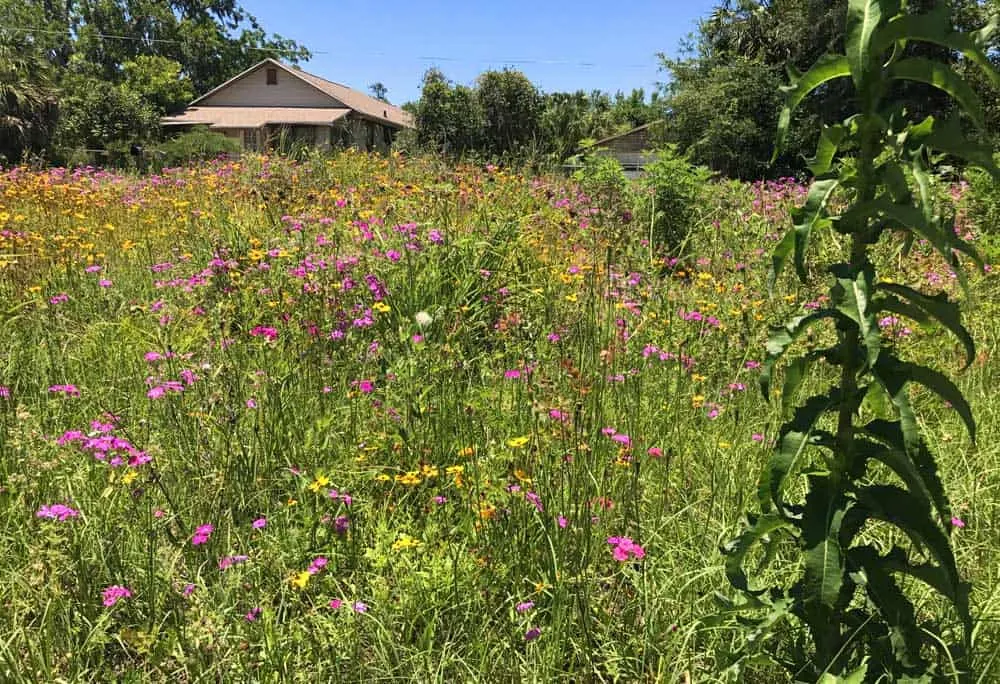
The whole region along the Big Bend Scenic Byway, though, is a treasure of unspoiled Old Florida scenes.
Some of my favorite experiences were those side trips off the byway to spots that aren’t really big deals, but were delightful to discover. And that is what road trips are all about.
This guide starts at the eastern end of the byway and ends in Apalachicola. (The scenery is terrific all the way to Pensacola on US 98 for those with more time.)
We spent five days here – one day kayaking, one afternoon bicycling, a day at St. George Island beach and the rest of the time driving and stopping at various interesting spots. We could easily have spent more time if the weather had been cooler (it was a little steamy for hiking, and there are some great hiking trails) or if we had kayaked on another river or coast. (There are many options for kayakers in this region.)
On the other hand, you could do this drive in a day and make a just a few selected stops along the way. (If you do, you’ll want to return and spend more time.)
Either way, this is a less-visited section of Florida that is worth visiting.
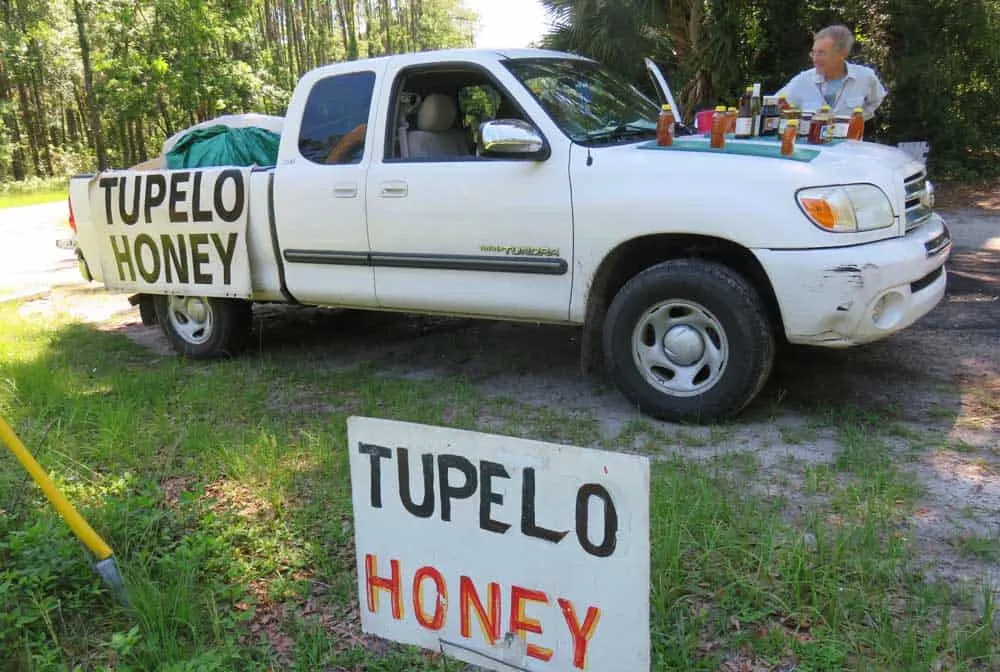
Big Bend Scenic Byway: St. Marks and Wakulla Springs area
The eastern end of the byway starts in Wakulla County, where there is a cluster of great destinations. (I’ve written separate stories about St. Marks Florida and Wakulla Springs with more details that will complement these brief entries — worth reading if you plan to visit.)
You’ll probably start the Big Bend Scenic Byway at Newport. Like a lot of places listed as towns on the map, you might drive through without even noticing it. The highlight here, though, is the vendor at the corner of US 98 and SR 267 who is selling tupelo honey from his pickup truck. Tupelo honey comes only from bees who have visited blossoming tupelo trees, and the very best is from along the Apalachicola River valley nearby. It is so special it is hard to find outside this region.
The tupelo honey guy is a local fixture; he’s been on this corner for more than 15 years and he’s even on Google street-view image. Tupelo honey makes a great souvenir (and we love the Van Morrison song), but this isn’t the only chance you’ll have to buy it.
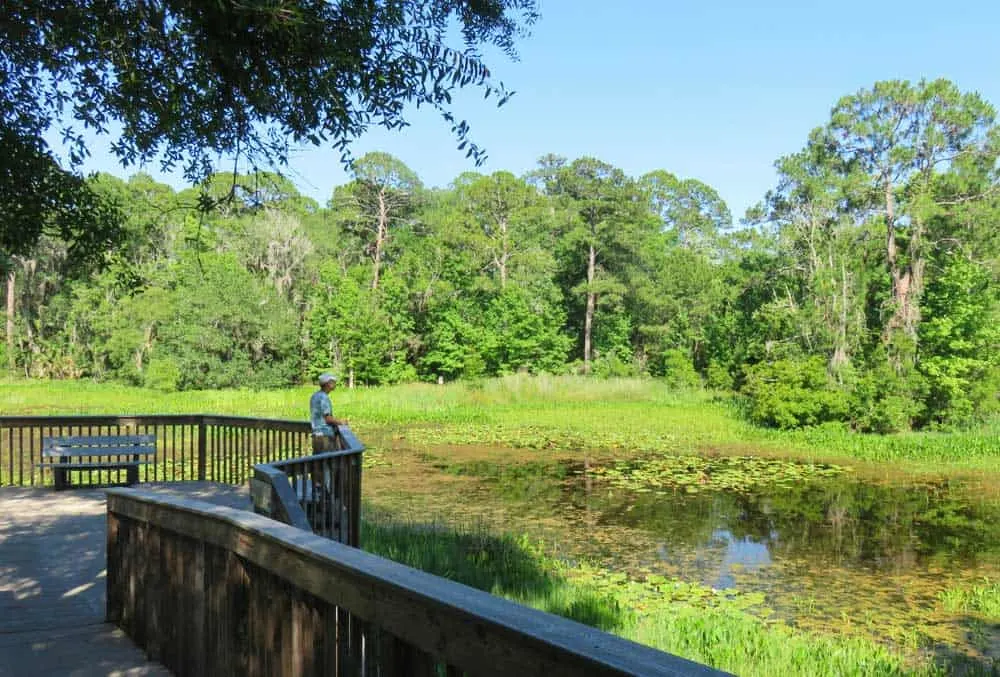
We recommend you take a side trip off US 98 south from Newport on Lighthouse Road. You’ll pass the beautiful headquarters for St. Marks National Wildlife Refuge, where you can find out about local hiking trails and wildlife sightings. This scenic road continues to St. Marks Lighthouse. You can’t climb the lighthouse, but the vista here is worth the drive.
A great side trip north from Newport on SR267 takes you to Ed Ball Wakulla Springs State Park. Made famous by Tarzan films, this first magnitude spring has a big spring-fed swimming beach, a tower from which daredevil youth dive into the deep clear spring, a boat tour, trails and many places to explore nearby.
We stayed in the historic Wakulla Springs Lodge. This rustic yet elegant 27-room hotel reminds me of the historic lodges built in the national parks. It makes a great overnight stay along the byway.
While you’re in this area, if you’re a bicyclist, we recommend you ride the Tallahassee-St. Marks Historic Railroad State Trail, a 16-mile bike trail that was Florida’s first rail-to-trail, preserving a historic corridor. It ends at picturesque St. Marks.
Once you return to the Big Bend Scenic Byway to Newport, it’s only two miles before your next side trip — the turn-off south to St. Marks, which is 20 minutes south.
St. Marks, Florida, is a historic town, located where the Wakulla River meets the St. Marks River. There’s not much to it, but this little town has one of the longest histories of any place in Florida, and the state park located here, San Marcos de Apalache Historic State Park, tells the story.
If you’re a history buff, you’ll want to pay $2 to enter the museum, where an 18-minute video gives a great overview. No fee is required to take a short scenic trail that circles the museum.
We stayed in St. Marks at the historic Shell Island Fish Camp, located a mile from St. Marks “downtown.” The fish camp offers clean, inexpensive motel rooms in a busy marina on the St. Marks River. (The other St. Marks option is The Sweet Magnolia Inn, a bed and breakfast.)
After visiting St. Marks, return to US 98 and in two miles you cross the Wakulla River. This is the launch point for a kayak trip on the gorgeous Wakulla River. You can rent kayaks or pay a small fee to launch your own from T-n-T Hideaway, 6527 Coastal Hwy. Crawfordville, FL 32327. (850-925-6412) The clear spring-fed river has outstanding scenery.
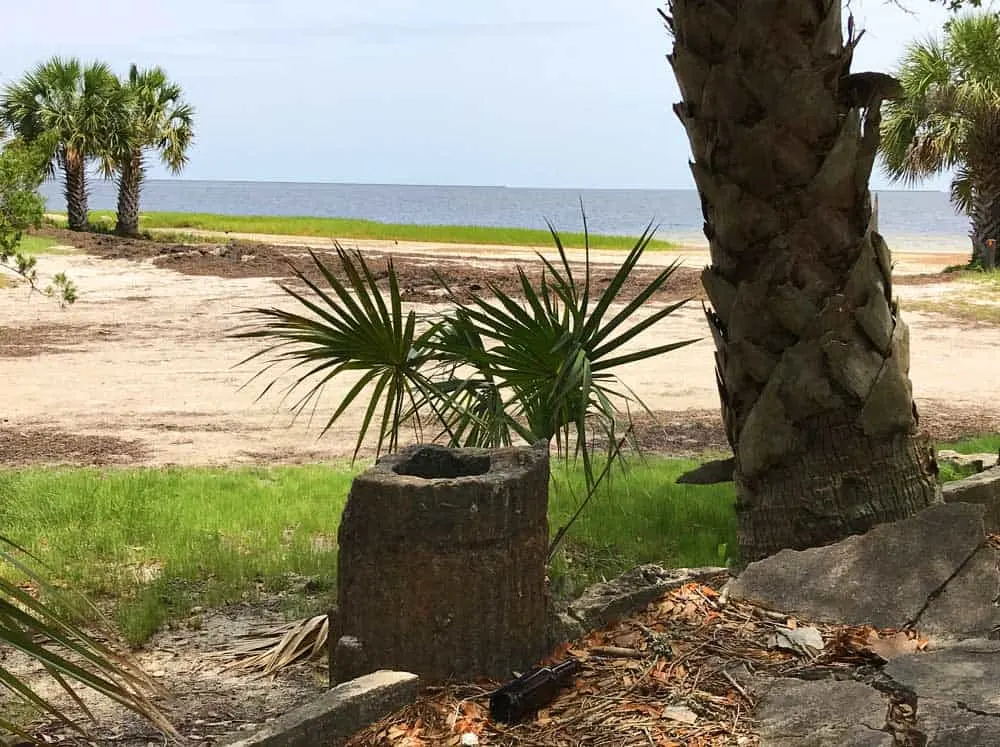
About a mile west of the Wakulla River, watch for a left turn on tiny Wakulla Beach Road. You’ll be heading back into the St. Marks National Wildlife Refuge. This hard-packed sand road travels a few miles through a beautiful forest and ends at the Gulf where thousands of fiddler crabs cover the ground and the picturesque ruins of an old hotel are crumbling.
If you’re planning a visit to the St. Marks and Waukulla area, there is more detail in this Florida Rambler guide.
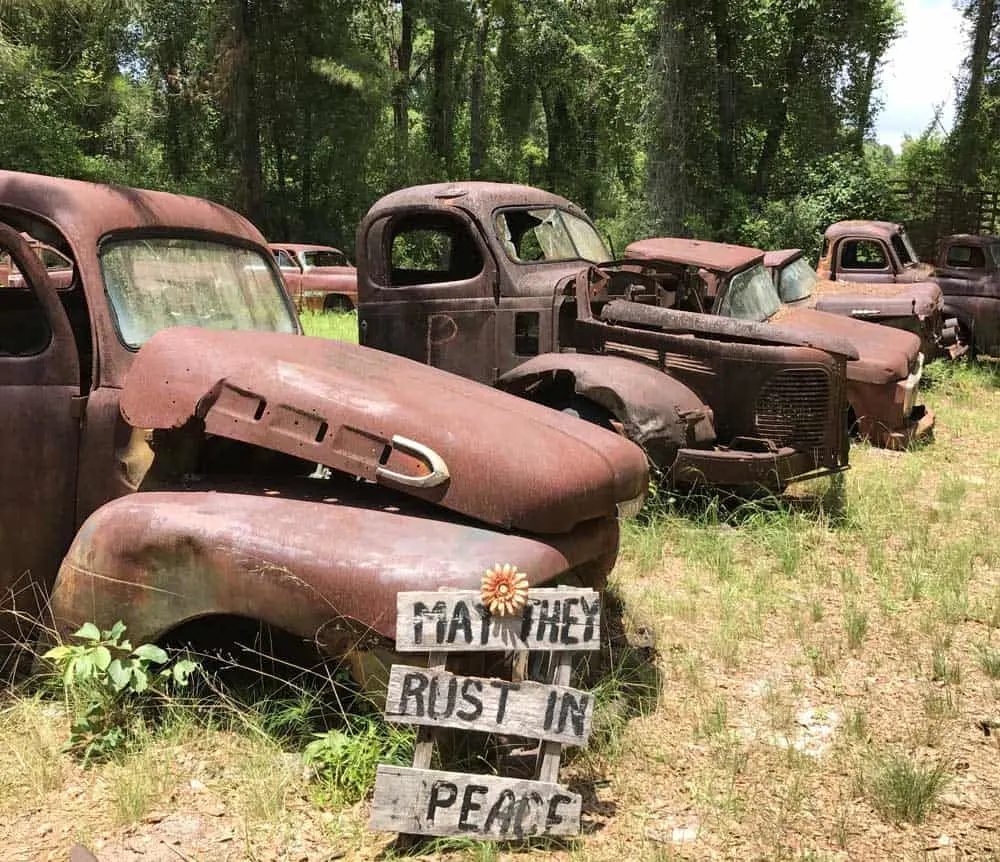
More sites along the Big Bend Scenic Byway
Back on US 98, it’s five miles until the next recommended side trip. Take a right on US 319 and within 2 miles, you’ll come to Harvey’s Historic Truck Display, which makes it sound all official, which it isn’t. It’s a field of rusting antique cars and trucks that people love to photograph, and we thoroughly enjoyed it. (Here’s the back story on Harvey’s trucks plus more photos.)
Do you see a pattern here? Just about every road east or west takes you to some delightful experience, so pick and choose what appeals.
Here’s a good example: About five miles further, there’s another road south to the Gulf coast. This one, called Bottoms Road, leads to another little-visited grassy-edged beach where you can walk, wade, find hermit crabs and enjoy the scenery. (If you’ve taken the road to Wakulla Beach, this is similar.)
The next little town along US 98 is Panacea and you’ll have a chance to pick up brochures and get information from the Wakulla County Welcome Center in an inviting waterfront location at 1505 Coastal Highway. Across the street is a derelict mineral spring that was the original attraction here and the source of the town’s name. It’s a neglected, weed-filled site that deserves restoring.
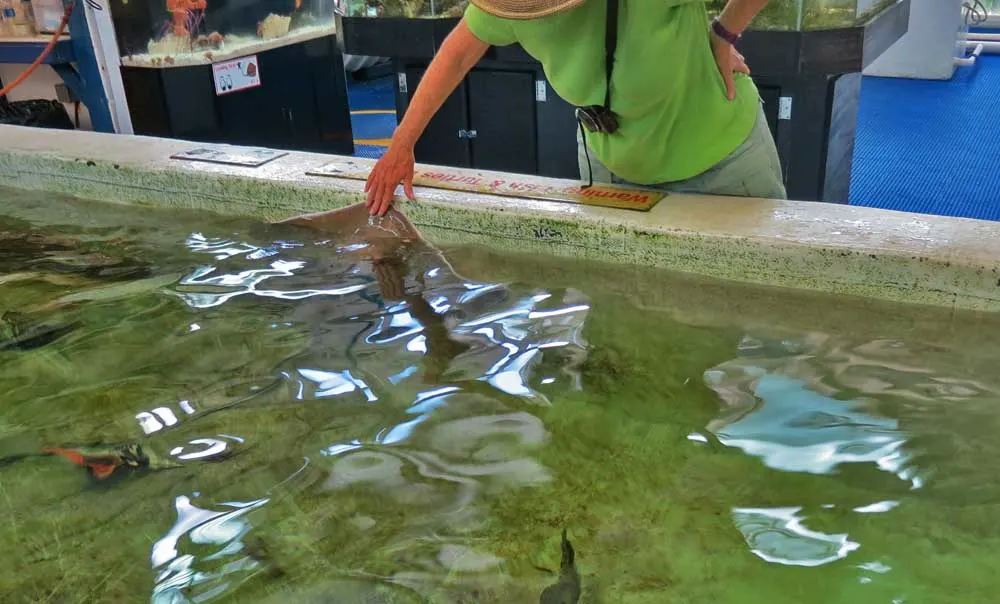
Animal lovers and families might want to stop in the little Gulf Specimen Marine Laboratory, 222 Clark Drive, Panacea.
It’s a non-profit aquarium with lots of touch tanks with crabs, anemones, sea stars, coral and marine plants. Non-touch tanks house octopus, nurse sharks, sea turtles, grouper and more Gulf sea life.
We loved the friendly stingray, who extends his wing out of the water and which you are allowed to touch. It’s a fun 30 to 45 minute stop. Tickets are $10 adults.
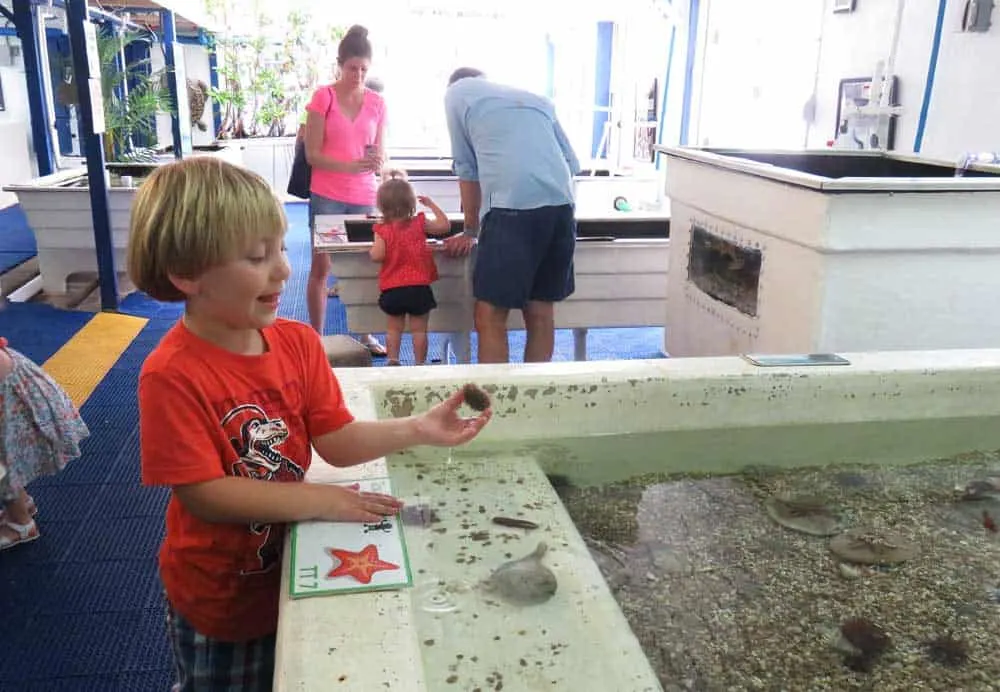
After Panacea, the Big Bend Scenic Byway crosses Ochlockonee Bay (pronounced o-clock-nee) and the turn off for Bald Point State Park.
We found this state park a worthwhile side-trip because of the beautiful scenery. This is the first good beach you come to on this end of the byway, and the area feels remote and far from development.
The park is huge – 4,000 acres – and is home to lots of wildlife, from black bears to eagles to alligators. In the fall and winter, birding is excellent and monarch butterflies migrate past here in fall. Hiking is extensive with 18 miles of trails. We made a brief visit and enjoyed a short boardwalk trail with big views. (We want to return and see it all!)
A few miles after you re-join US 98, you come to the section of the Big Bend Scenic Byway where the road follows the shoreline and offers dramatic views. This is everything you want in a scenic road: It is not heavily trafficked, there is little development and you have unobstructed views of the water for miles. There are many places where you can pull off the road and park and walk down to a sandy pocket of beach. We found ourselves asking: Where are all the condos? The answer: Not here. No yet.
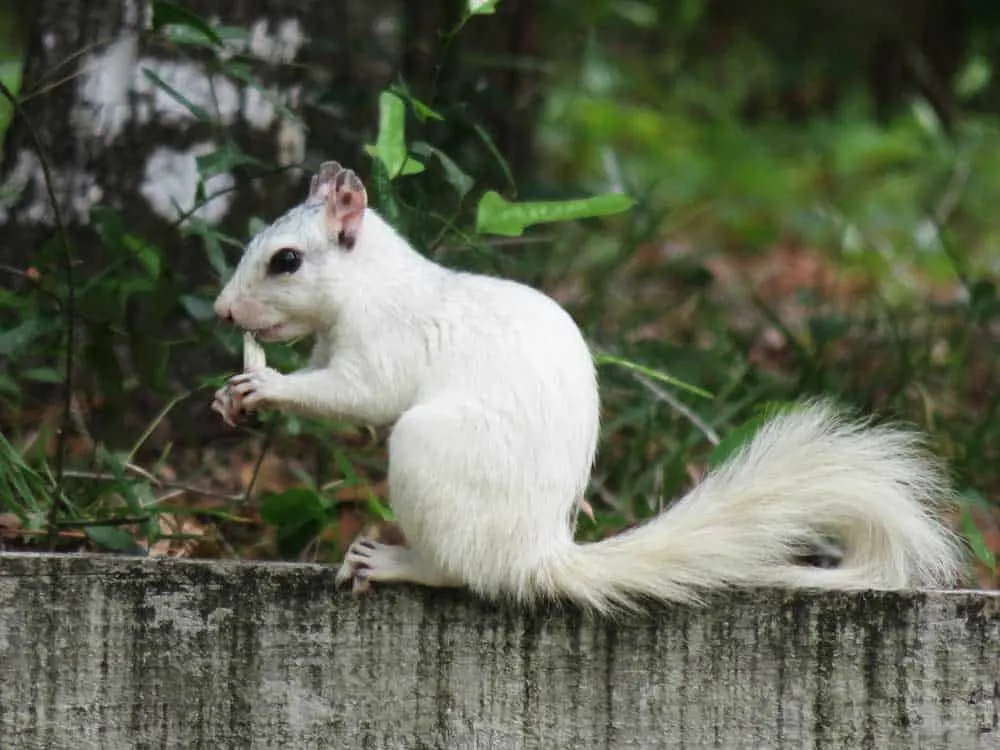
As you cruise down US 98, you might want to take another side trip with a right turn on US 319. Six miles north is Ochlockonee River State Park, a serene riverfront park with picnic grounds and campgrounds. We made time for this stop because we were fascinated by one of Florida’s wonderful oddities: A colony of pure white squirrels.
Sixty years ago, the owner of a historic inn called the Breakaway Lodge (now private) brought in a small population of white squirrels from a nearby farmer. These squirrels – leucistic not albinos (they don’t have pink eyes) – thrived and today can be seen in Ochlockonee River State Park. We saw one white squirrel inside the park, but our best sightings were along a road adjacent to the park near the former Breakaway Lodge. (Take a right turn on Rio Vista Drive, the last road before you cross the Ochlockonee River. This road leads to a boat ramp for beautiful Cow Creek, also a recommended kayaking stream.)
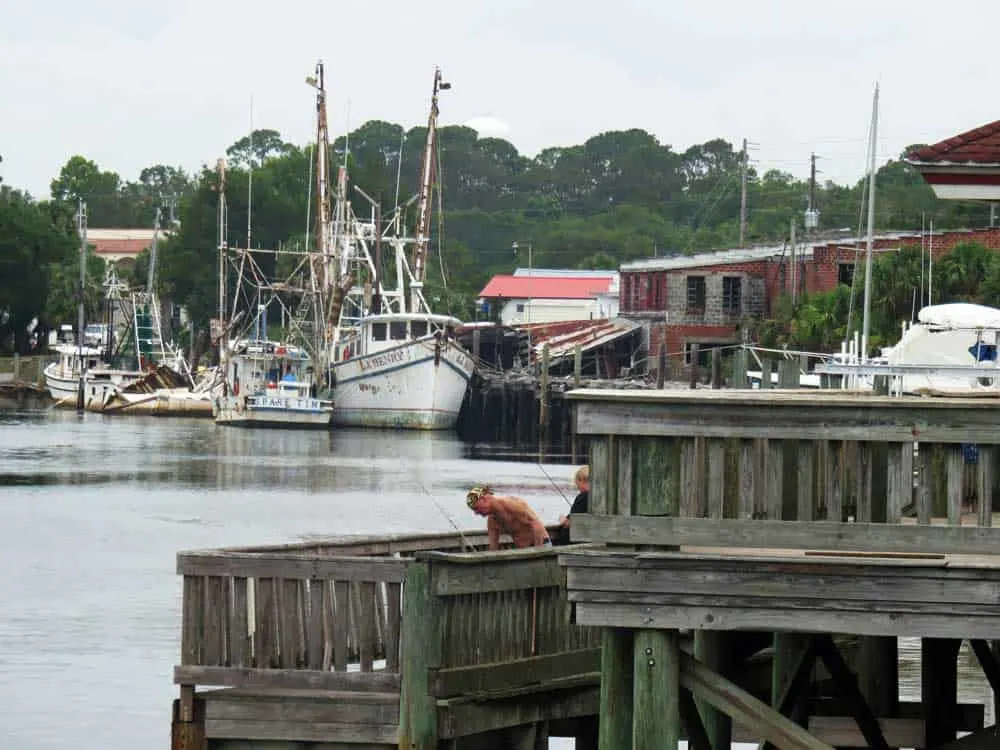
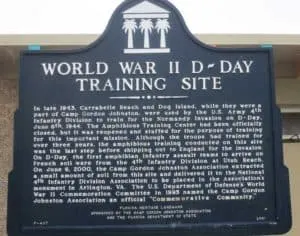
Back on US 98, your next stop on the byway is Carabelle, a historic fishing town with 3,000 residents. If you want to see a little bit of Carrabelle you have to get off US 98 and take the left turn that is marked as the route to the historical society. This road takes you to the attractive walk along the Carabelle River, with fishing spots and signs about local history.
In Carabelle, 1001 Gray Ave., the small Camp Gordon Johnston WWII Museum tells the story of how this part of the coast was the site of a massive training program for soldiers who were preparing for amphibious landings in World War II. The final training before D-Day occurred here. There are also several historic markers along the byway on this topic.
Looking for accommodations? If you like historic spots, the 120-year-old Old Carabelle Hotel gets good ratings from TripAdvisor.
West of Carabelle on US 98, you’ll come to the Mid-Century Modern picnic pavilions at Carabelle Beach, another place to take a break.
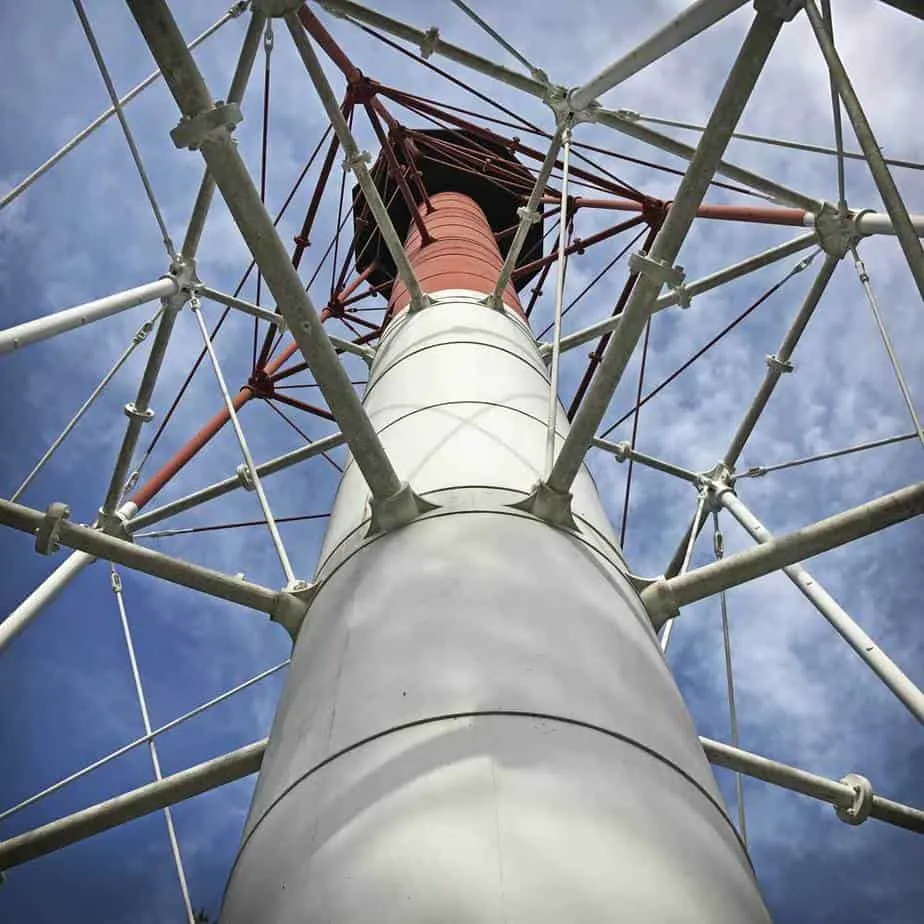
A few blocks west of this beach, you reach the second of this trip’s historic lighthouses, the 115-year-old Crooked River Lighthouse. You can climb this lighthouse and visit the Keeper’s House Museum from 1 to 4 p.m. Wednesday to Sundays. ($5 per person admission.) The lighthouse is right off the road and has picnic tables, so it’s a nice place to pause even if you don’t climb the lighthouse.
A few miles west of here is the trailhead for High Bluff Coastal Trail, which I would love to hike on a return trip. Here’s an account from Florida Hikes.
The last two stops on the Big Bend Scenic Byway are both worth a good amount of time, and that’s why I’ve broken them out into a separate article: Apalachicola and St. George Island. (If you are considering this trip, be sure to read these more detailed reports.)
You’ll come to the causeway to St. George Island first, although if you’re going to stay in Apalachicola (which we recommend), you might want to save your visit to the island until the next day.
St. George Island and Apalachicola
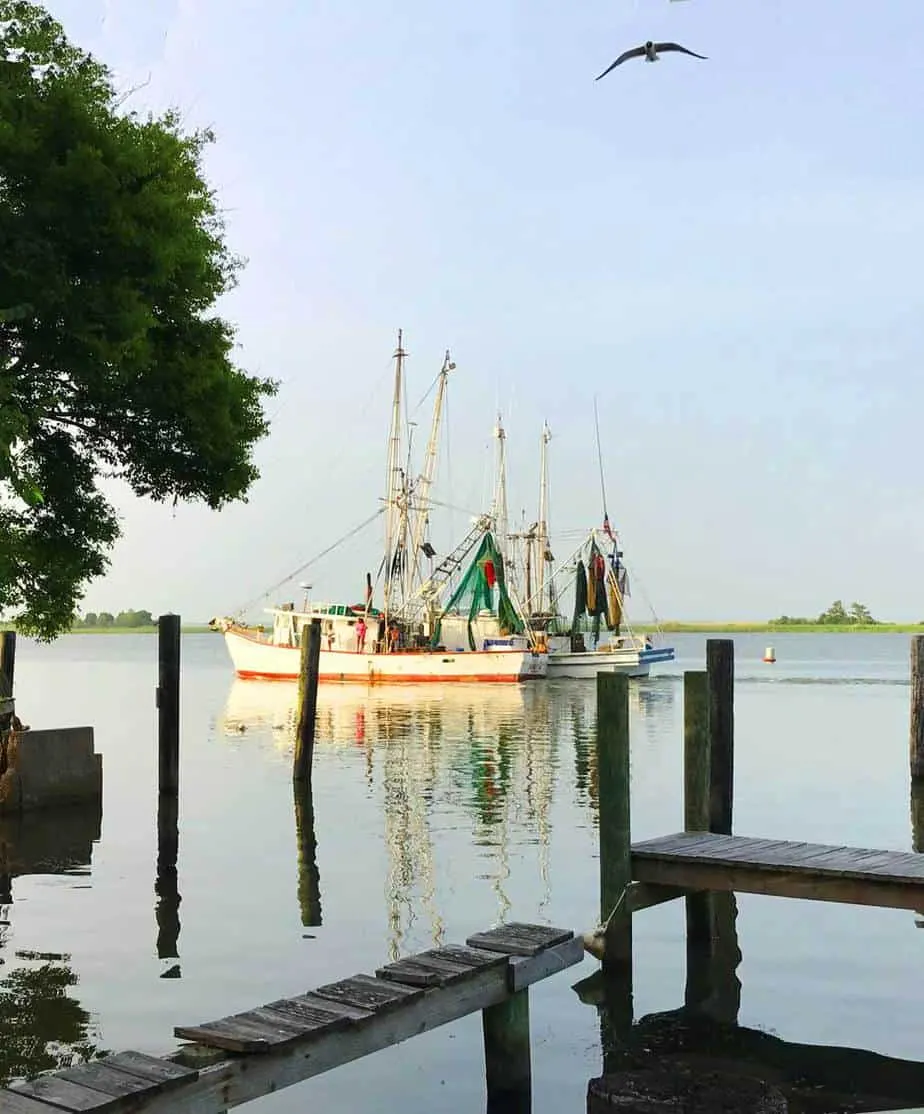
St. George Island has nine miles of beach in St. George Island State Park, and it’s one of the best beaches in the country. The park has camping, hiking and some of the most beautiful sand dune landscapes in the state.
As you enter St. George Island from the causeway, you can make a stop at the St. George Island Lighthouse, the third historic lighthouse on this tour, which you can climb for a small fee. There’s a terrific beach with good facilities at the lighthouse and free parking.
Back from St. George on US 98, Apalachicola is a surprisingly lively historic town. It’s compact and walkable, with enticing shops, good restaurants, a great local craft brewery and live music in sidewalk cafes on weekends.
There are many things to do with Apalachicola as a base:
- There are miles of great kayaking trails near here along the Apalachicola River.
- Just south of Apalachicola, St. Vincent National Wildlife Refuge occupies an island you can reach only by boat, and shuttles are available.
- A state park museum tells the story Apalachicola’s most famous son, Dr. John Gorrie, the father of air conditioning.
- Orman House Historic State Park preserves an 1838 mansion built by a wealthy cotton merchant. It’s adjacent to Chapman Botanic Gardens.
- There’s a small Apalachicola Maritime Museum that offers daily boat tours.
For more detail about St. George Island and Apalachicola, see this more in-depth guide.
More resources for planning your trip on the Big Bend Scenic Byway
- Florida Rambler guide to St. Marks and Wakulla Springs
- Florida Rambler guide to Apalachicola and St. George Island
- Big Bend Scenic Byway guide as PDF
- Ed Ball Wakulla Springs State Park
- St. Marks National Wildlife Refuge
- Tallahassee-St. Marks Historic Railroad State Trail
- Apalachicola River Blueway
- Gulf Specimen Marine Laboratory
- Bald Point State Park
- Ochlockonee River State Park
- Camp Gordon Johnston WWII Museum
- Crooked River Lighthouse
- St. Vincent National Wildlife Refuge
- St. George Island State Park
- Apalachicola Maritime Museum
- Orman House Historic State Park
- John Gorrie Museum State Park
Traveling on to the Panhandle? Also from Florida Rambler: Gulf Islands National Seashore: Beaches that wow; rare old fort
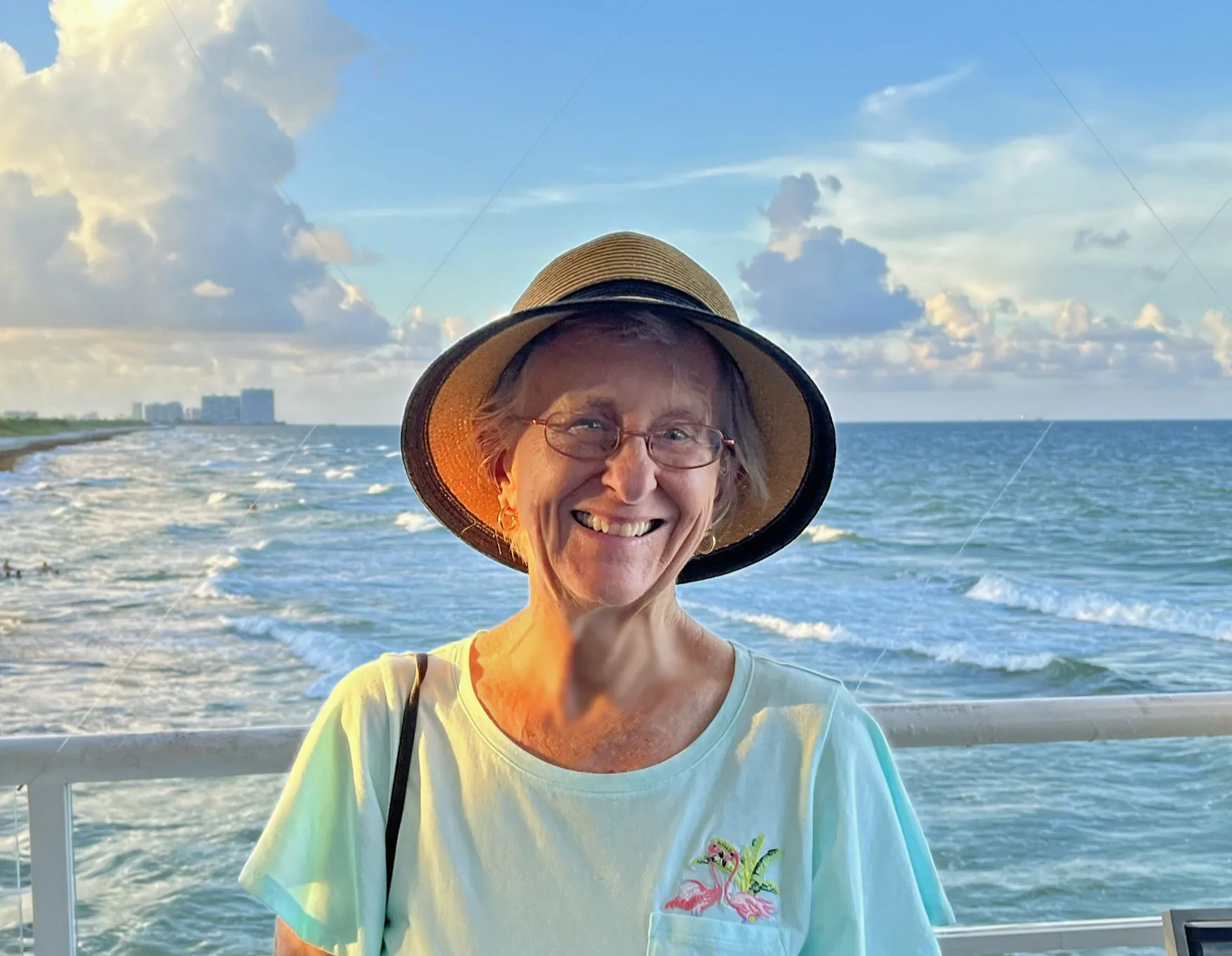
The author, Bonnie Gross, travels with her husband David Blasco, discovering off-the-beaten path places to hike, kayak, bike, swim and explore. Florida Rambler was founded in 2010 by Bonnie and fellow journalist Bob Rountree, two long-time Florida residents who have spent decades exploring the Florida outdoors. Their articles have been published in the Sun Sentinel, the Miami Herald, the Orlando Sentinel, The Guardian and Visit Florida.

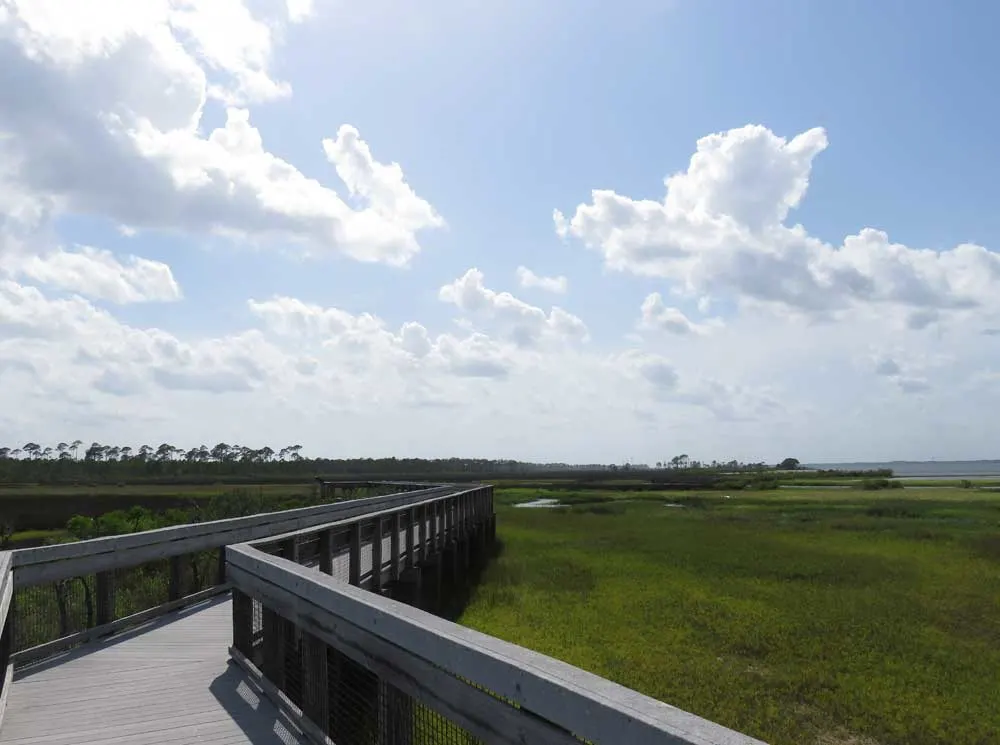
Charlie
Monday 26th of June 2017
Thanks for the article on Big Bend Byway, we are new RV campers from SC and plan on our first road trip to Florida later his year. We were thinking a trip down A1A but the Gulf Coast is very enticing. I had visited a small fishing town named Yankee Town in the 80's and loved it. Maybe we can do both! We love your website, thanks so much. Charlie and Glenda
David Katz
Monday 26th of June 2017
Wonderfully informative trip report, as always! Thank you, Bonnie.